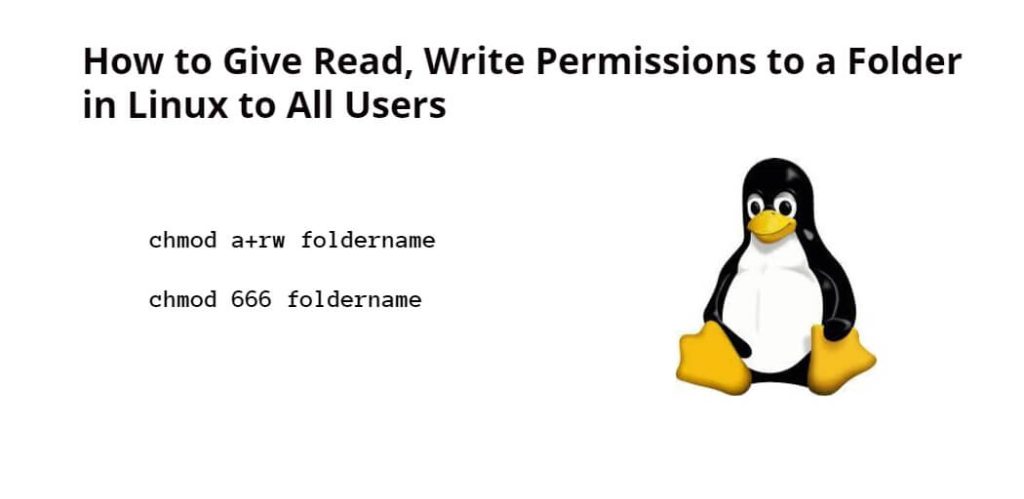Permission is very important for security. That’s why whenever an app or project is placed on the server. So to protect it, different permissions are given to different folders, subfolders, and files. But when a developer works, he can work it only by changing the permissions. In this tutorial, you will learn step by step how to give read and write permission to folders in Linux for all users.
Before you get started, it’s essential to understand Linux’s permission model. In Linux, permissions are divided into three categories: user, group, and others. The user refers to the owner of the file or folder, while the group represents a collection of users. The others category covers all other users who do not fall under the user or group categories.
To give read and write permissions to a folder in Linux, you will use the chmod command. Chmod stands for “change mode,” and it is used to modify permissions on files and folders.
How to Give Read and Write Permissions to a Folder in Linux to All Users
Here are the steps to give read and write permissions to a folder in Linux to all users:
- Step 1: Open the terminal
- Step 2: Navigate to the folder
- Step 3: Change the permissions of the folder
- Step 4: Verify the permissions
Step 1: Open the terminal
First, you need to open the terminal on your Linux system. You can do this by pressing Ctrl+Alt+T on your keyboard or by searching for “terminal” in the applications menu.
Step 2: Navigate to the folder
Next, execute the following command on the terminal to navigate to the folder you want to modify permissions for using the cd command. For example, if the folder is located in your home directory, you can navigate to it by typing:
cd ~/foldername
Replace “foldername” with the actual name of the folder you want to modify.
Step 3: Change the permissions of the folder for user
Once you are in the folder, execute the chmod command to give read and write permissions to all users. Type the following command on the terminal:
chmod a+rw foldername
The “a” in the command stands for “all,” which means that the permissions will be applied to all users on the system. The “+rw” part of the command indicates that you want to add read and write permissions to the folder.
Similarly, you can use the following command to give read and write permission to all users:
chmod 666 foldername
Step 4: Verify the permissions
Finally, you can verify that the permissions have been changed by using the ls command to list the contents of the folder. To do this, type:
ls -l
The output of the command will show the permissions for the folder. You should see something like this:
drwxrwxrwx 1 user group 4096 Apr 22 2023 foldername
The “rwx” part of the output indicates that the folder has read, write, and execute permissions for all users.
Here are some frequently asked questions (FAQs) about giving read and write permissions to a folder in Linux to all users:
Q: What does the “a” in the chmod command stand for?
A: The “a” stands for “all,” which means that the permissions will be applied to all users on the system.
Q: How can I give read and write permissions to a specific user instead of all users?
A: Yes, you can use the username instead of “a” in the chmod command. For example, to give read and write permissions to the user “Johndoe,” you would use the command “chmod u+rw foldername”.
Q: How can I give read and write permissions to all users on a specific file instead of a folder?
A: Yes, you can use the chmod command with the “a+rw” options to give read and write permissions to all users on a specific file. For example, to give read and write permissions to a file named “filename,” you would use the command “chmod a+rw filename”.
Q: Can I use a graphical interface to modify permissions on a folder or file in Linux?
A: Yes, most Linux distributions come with a graphical file manager that allows you to modify permissions on files and folders. However, using the command line interface with chmod is more efficient for making changes to multiple files or folders at once.
Conclusion
In conclusion, giving read and write permissions to a folder in Linux to all users is a straightforward process. You need to use the chmod command with the “a+rw” options to apply the changes to all users on the system. Remember to be careful when modifying permissions, as incorrect settings can compromise the security of your system.
